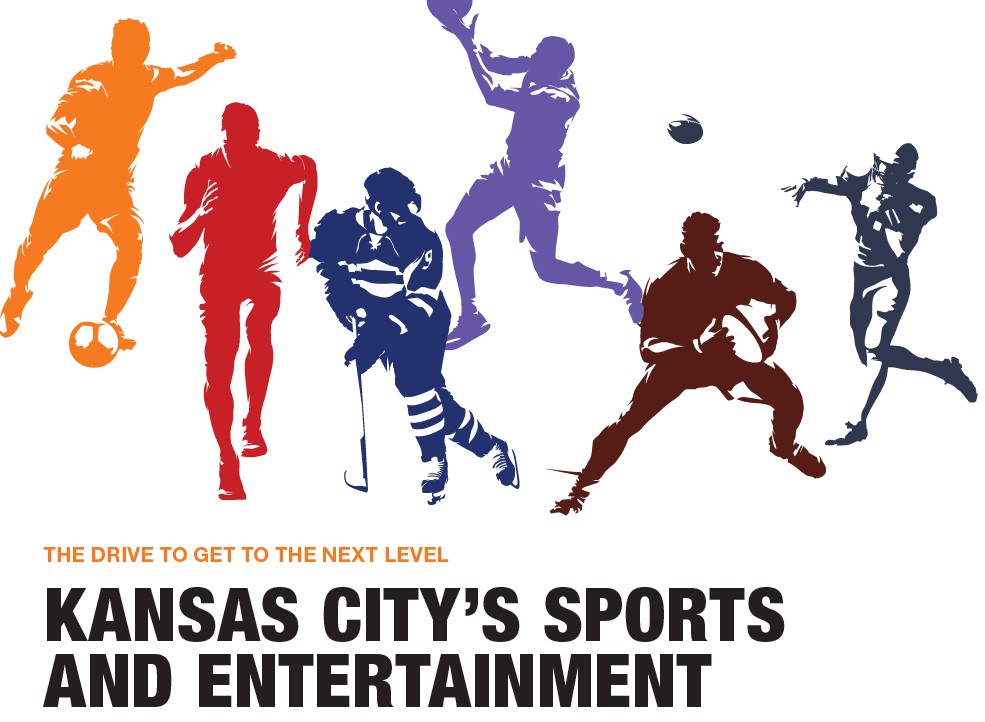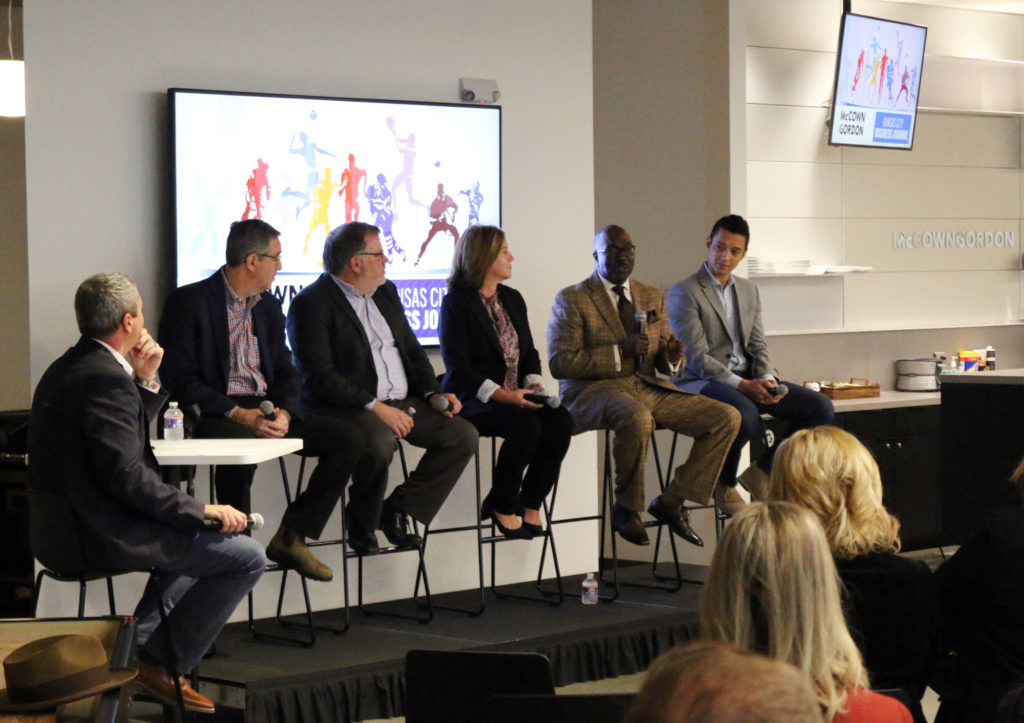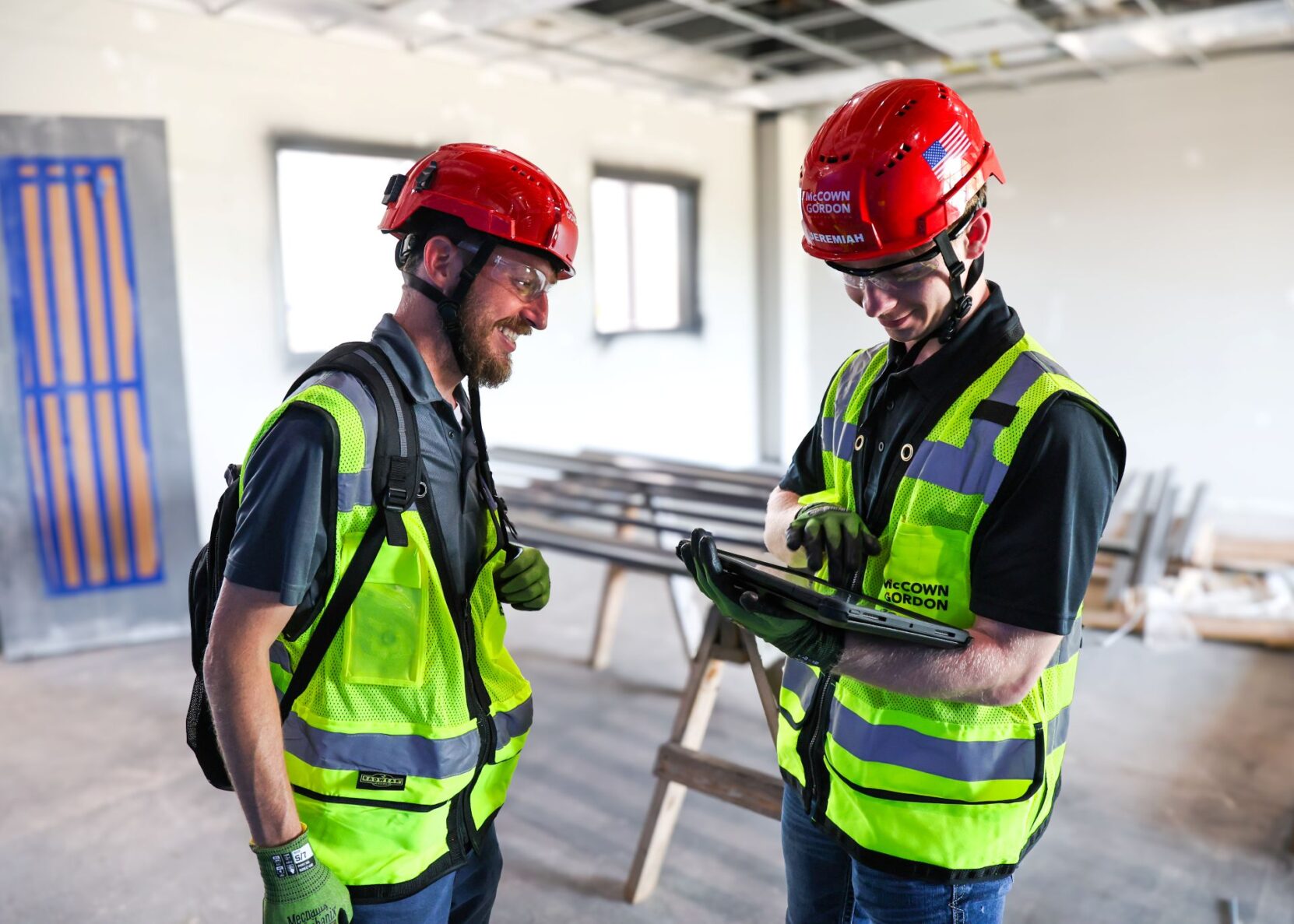Kansas City’s Sports and Entertainment Panel
The drive to get to the next level


Even with the hiccup of 2020, the Kansas City metro area appears poised to make dramatic strides in sports and entertainment during the next decade, according to a panel of key local leaders hosted by McCownGordon Construction.
Several crucial issues have been addressed, and that progress has allowed local leaders to expand on the intensive revitalization work of the past two decades. Among key strides: The building or updating of various sporting venues around the metro area, including the plan to build a $70 million National Women’s Soccer League stadium on the riverfront; the addition of the $325 million, 800-room Loews Kansas City Hotel; and the new Kansas City International Airport, scheduled to open in March 2023.
“All of this stuff helps us get more and more (events), which I hope in turn drives economic impact that helps us do bigger things,” said Kathy Nelson, president and CEO of the Kansas City Sports Commission and Foundation. The foundation works, in concert with other local entities, to draw events to Kansas City, and it runs events of its own. The metro area now can competitively pursue sporting events of international renown — including the highly publicized bid for the 2026 FIFA World Cup, the largest sporting event in the world, Nelson said. It would bring an estimated $620 million economic lift, plus showcase Kansas City on the world stage.
“It is a big deal,” she said.
Momentum began years ago, and with a narrower focus, when the T-Mobile Center and Power & Light District transformed Downtown from a barren cluster of offices into a destination for urban life and entertainment.
Kansas City International Airport has been a stumbling block when courting new events or corporate offices. But progress on the new terminal, on track to open in March 2023, helped land the 2023 NFL Draft and the 2024 NCAA Men’s Wrestling Championship.
“The airport is your front door,” said Geoff Stricker, senior managing director for airport developer Edgemoor Infrastructure & Real Estate. “It’s the first thing they see when they come to Kansas City, and it’s the last thing they see when they leave, so we wanted to make sure we got that experience the way that it reflected the best of Kansas City.”
The T=Mobile Center, now 14 years old, used the live entertainment pause of 2020 to rebrand from Sprint to T-Mobile and upgrade technology, including adding mobile pay at concessions, said Michael Chalfie, vice president and assistant general manager. The arena had been poised for a big year in 2020 and now is making aggressive forecasts for 2022 success. Based on bid feedback, they’re considering new LED lighting and LED boards around the city to market events, Chalfie said. Still, there’s more to be done.
Barney Allis Plaza in Downtown badly needs a facelift, Nelson said. “That is the heart of our city, and when we use all of our hotels and that is their front lawn, it doesn’t work without that thing being fixed,” she said.
The sports foundation isn’t the only local entity drawing attention to Kansas City. In 2020, the Negro Leagues Baseball Museum planned a year-long celebration of the 100th anniversary of the birth of the Negro Leagues, complete with a national day of recognition in June, said museum President Bob Kendrick. The celebration also was to kick off a fund-raising effort for the museum to allow it to operate into perpetuity, starting with a $1 million check from Major League Baseball and its Players Association. Then everything shut down.

Pivoting, the museum arranged a virtual tipping of caps to the Negro Leagues, gaining attention from such high-profile figures as former U.S. presidents. It also pursued U.S. coins commemorating the Negro Leagues and reached a long-term licensing deal with the T-Bones Baseball Club to rebrand as the iconic Kansas City Monarchs of the Negro Leagues.
“It was a level of recognition around our museum and the Negro Leagues that we’d never seen before,” Kendrick said.
Looking to the future of sports and entertainment, key considerations will go far beyond space and aesthetics, including security, IT infrastructure and sustainability. Arenas seek to present an experience, not just a ticket and a seat, said Rashed Singaby, principal and senior project designer with HOK. Arenas of the future will pursue flexibility and inclusion, such as offering concessions that serve the street and allowing pedestrians to use alleys through the arena when no events are scheduled.
“Because these venues are public amenities, they cannot live in isolation,” Singaby said. “They have to be a community partner… Venues like these become catalysts for further development and encouraging the evolution of neighborhoods.”




